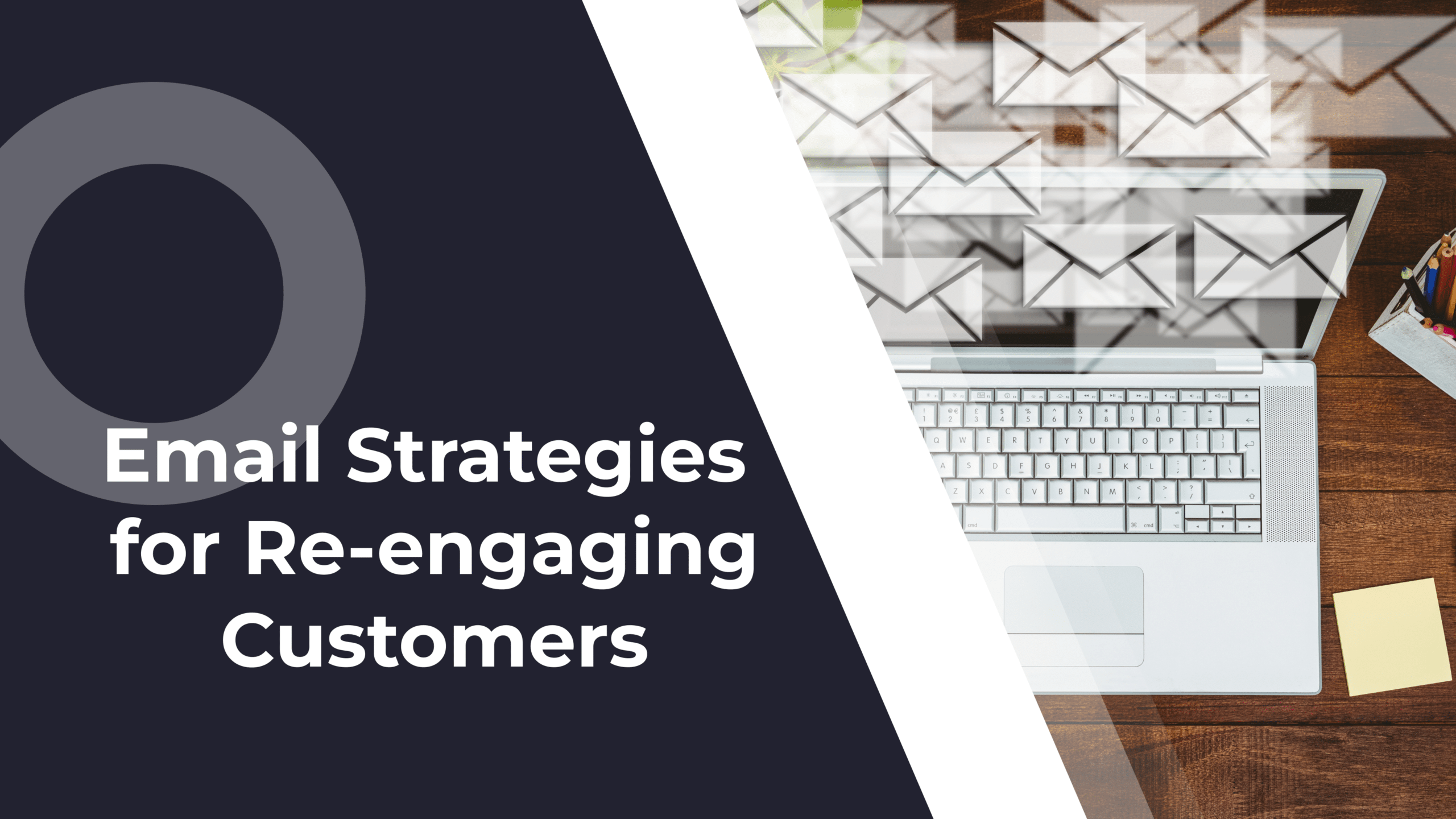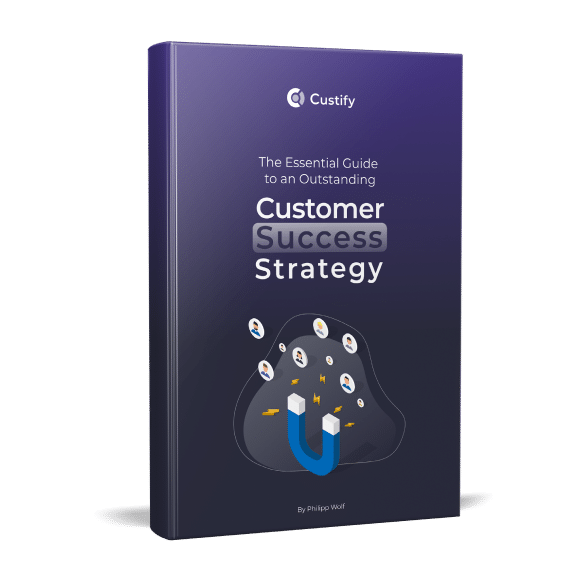With so much AI around us, it can be confusing to separate the good from the bad.
Today, I’m here to try. Specifically, I want to show you how to use artificial intelligence to enhance your existing customer retention strategy.
But when it comes to AI retention tactics, almost every piece of content will tell you to hyper-personalize with AI, to use AI to turbocharge customer relationships, or to harness AI to enhance customer journey orchestration.
The truth is AI is the future – 78% of consumers believe that, but just 39% are excited by it (MNTN Research). The question then becomes how do you adopt AI in a way that customers trust?
Let’s scrap the buzzwords for a second. What are we left with?
11 Powerful Gen AI Tactics to Improve Customer Retention
After poring over countless AI guides for retention and sifting away filler content, I’m left with some real gold nuggets you can actively use to get better at keeping your customers happy and engaged.
I’ll start with more concrete, brass tactics, and then move on to strategic AI moves with a broader scope and wider vision.
1. Use AI to Optimize Timing, Duration, and Precision
If you use artificial intelligence to look at the customer journey, you can easily identify three key elements for effective retention:
- The right moment – helps you reach out and talk to customers at the right time (e.g. Custify health score dips, user opens 3+ support tickets, usage drops 20%).
- The right length of interaction – gives you a sense of how much to engage, making sure you’re being as effective as possible without annoying customers (e.g. in tech support, a good average handle time is 8-10 minutes)
- The right messaging – customers will, throughout their lifecycle and touchpoints, give you plenty of signals regarding their status. AI can help you put all of these together in an easily digestible form, such as a bulleted list of things to keep in mind when drafting your messages.
This tactic can be deployed through in-app AI tools (like our AI summaries): simply use AI to monitor customer activity, set up triggers that notify you when you need to reach out, then use the AI summary to determine your retention approach and how much you should push it.
Note that the same tactic, with small changes, can also be deployed to increase loyalty and promote upsells or cross-sells.
2. Be Mindful of the Entire Customer Journey
So many AI retention tactics focus on a single stage of the customer journey – the eponymous retention stage. However, time and again in customer success, we’ve said that retention begins much earlier, with the decision and even consideration stages.
Think about it:
- Pre-sale happens during the consideration stage and includes calls, emails, and product demos.
- Onboarding happens between the consideration and retention stages and includes the actual onboarding flow, calls, emails, training materials, and plenty of customer education content. It’s also one of the most impactful: poor onboarding is the third most common factor that leads to churn.
These two moments are key to reaching your retention goals. For SaaS providers using AI-driven personalization to improve retention, understanding what defines a good PPC conversion rate by industry can be crucial for effective budget allocation and campaign scaling.
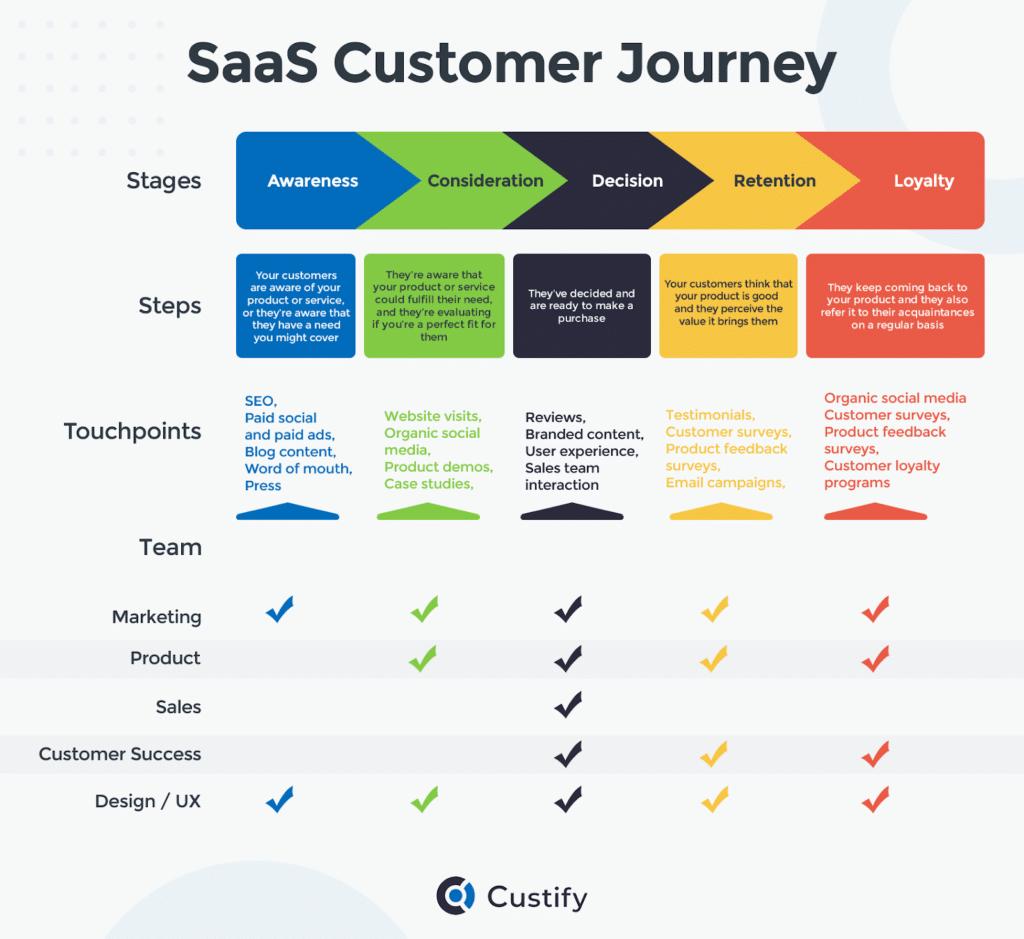
So, how can AI help? Simple – here are just a few ideas:
- Feed your entire customer journey into your preferred AI model* and ask it to identify touchpoints that are suboptimal and suggest potential improvements.
- Then, optimize those customer touchpoints using automation and AI suggestions, but filtering everything through a human perspective.
- Be creative, use AI only for timing, duration, precision, and, optionally, for inspiration, and leave the creative part for humans.
- Use influencers to help you be more authentic in customer interactions – you can also ask AI to help you draft a strategy for creating an influencer network, and suggest materials they can make to augment your customer journey.
*Tip: Remove confidential PII before upload, or use enterprise-grade LLMs (Azure, Open AI, Anthropic) with zero-data-retention clauses.
3. Listen Smarter, Remember More, Personalize Better
One of the key areas where artificial intelligence can make your business more efficient is customer records. Using a customer success software together with AI systems, you can have all you need to know about a customer at your fingertips. It all comes down to:
- Capturing all the important customer information. Simply integrate AI into your emails and meetings, or feed it specific data – how you do it and how much you share is up to you. The goal is to create comprehensive records for each customer.
- Querying AI for relevant information during specific customer engagements. Once your generative AI model has all the info, you can simply ask it for details (e.g. prompt – “summarize Acme Inc.’s last 90 days of feature adoption and churn risks in 120 words”) or ways to add a personal touch to your next email, QBR, Slack message, and so on. This should make your interactions more powerful and improve retention and loyalty.
You can also use your records to anticipate customer behavior, predict churn, and act on specific triggers. The aim is to be:
- Customer-centric
- Personal and attentive
- AI-aware and, in some cases, AI-driven
4. Respond to Customer Signals and Predict Behavior Using AI
Next, we should still cover one of the main ones that everyone’s talking about – simply because it’s the cornerstone of any customer success strategy – proactive customer engagement. Why is it such a key tactic? Because it can lower churn by up to 36%, improve CSAT scores by an average of 33%, and lead to revenue growth of up to 22% (IndustrySelect).
It can be set up very easily from most customer success platforms. You essentially create triggers per customer, customer segment, or for your entire customer base. These triggers should fire whenever a specific churn signal comes up, starting an automation flow that either solves the issues directly for customers or notifies you to step in (depending on your engagement model and the severity of the issue).
By handling predictive signals at scale, you can effectively negate a large portion of your potential churn. To augment the process, you can use AI to:
- Establish the most common churn precursors
- Determine how different customers or segments need to be serviced
- Create strategies to prevent churn for specific segments
- Manage and improve customer relationships at scale
- Aim to markedly increase CSAT and enhance customer referrals
Do this right, and you too can become known for your customer care. It can be a key argument that will win potential customers and help close deals.
5. Gather More Data, Generate Insights, and Feed Data Back into AI
One step many forget about when using AI is to feed their insights back into the gen AI engine. How does this help? In a number of ways:
- Centralizing essentials. As I said on point 3 on this list, AI is much better than humans at remembering critical information. If you use, for example, the ChatGPT Enterprise plan, you get access to a custom Sales and Success GPT you can use specifically as an assistant for growing your customer retention rate.
- Ideation. Use AI to interpret your own data and your own insights – once you have a gen AI model with all your essential information loaded in, you can present your ideas to it and conversationally develop them into even better ones. In my experience, even my best, most well-developed ideas have still benefited from slight improvements through AI.
- Suggesting new opportunities. While you’re conversing and brainstorming with your gen AI model, you should also ask it for new ideas based on existing datasets and your current situation.

Remember, however, that artificial intelligence should be an ally, not a replacement for reading, understanding, and critical thinking.
6. Improve Your Overall Business Processes with AI
Churn can also be a result of faulty internal processes. If a company operates inefficiently, that usually translates into delays, mistakes, or frustrating friction points for its customers.
You can use AI to improve your internal processes:
- Analyze and optimize your workflows and operations – see where you can improve efficiency.
- Don’t just monitor your customers, monitor your business too. It all comes from how you think about your business – if you always assume the problems are external, you’re going to miss when there’s an internal mishap or miscommunication. AI can help spot that and find a proportionate remedy.
Example: using AI to automate repetitive tasks, you can save upwards of 20 hours per week.
7. Restart Stalled Customer Engagements with AI
Next up – try to restart customer conversations that have stagnated. Plenty of times, the decision-making process of a customer hits a wall. That wall can mean they need to put out a fire and can’t think about you right now, or it could mean they’re annoyed with you.
Use AI to:
- Gauge customer sentiment
- Interpret their tone of voice
- Determine the best course of action
- Come up with a strategy to reengage
- Draft an appropriate response
The goal is to move decisions and conversations from stalled to progressing. If a customer is at a critical point in their onboarding process and they haven’t reached the value realization stage, there’s a very real possibility they’ll churn before the next renewal date – so it’s vital to step in, and AI is a great tool to help with that.
Example: A quick way to score customer sentiment is by using AI tools specifically designed for sentiment analysis, such as Symbl AI. Simply get a call transcript, remove any proprietary information, and feed it into the emotion analysis model – you can then upload these insights into another tool, such as Snowflake, to get a full view of customer activity.
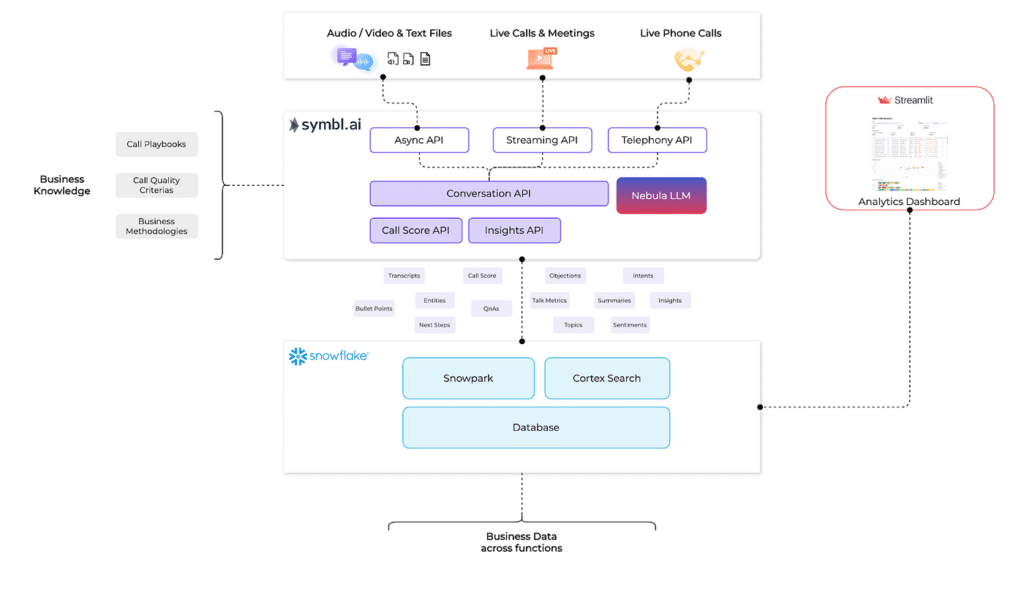
8. Empower Your Team with AI Tools
In the era of generative AI, it’s important to democratize the use of such tools. That means not simply using the tool yourself, but sharing it with your team, and, if possible, collaborating through AI.
To that end, don’t hoard AI resources – share them, especially if they’ve been useful. Let your team come up with innovative methods and solutions for using AI to further your retention goals.
If you’re a CS leader, encourage your CSMs to use AI to help deepen customer relationships. However, remind them that artificial intelligence shouldn’t replace their work but augment it. In niche cases, such as when they have to compile lengthy reports, AI can indeed be an efficiency booster, removing busywork and freeing up workflows.
As a best practice however, you should also provide your team with opportunities for reskilling or upskilling. As AI models become more powerful and AI adoption skyrockets, the types of skills that people need will also change. It’s best to keep that in mind and help your workforce evolve along with the industry.
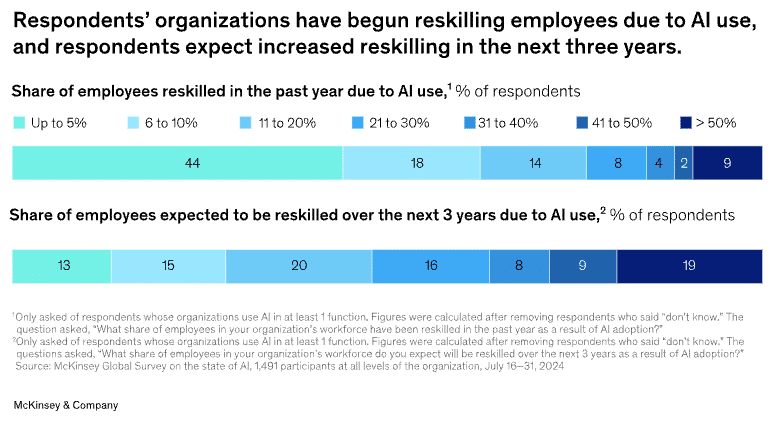
9. Improve Your Product with AI Features
Adding AI to your product? Sounds great, but make it unique. The goal of adding AI to the product should be to add value to the customer, not simply to jump on a trend. At Custify, we used it to provide our clients with an entire range of AI customer success features: from AI summaries to churn analysis, risk assessment, conversational UI chatbots, productivity tools, automated tasks, and more!
It also doesn’t have to stop with these features – we’re constantly working on new ways of integrating new technologies like AI into our already feature-rich CS tool. What’s more, we give our clients the liberty of using whichever AI model they already pay for: they can use the default CustifyAI credits or replace those with their OpenAI, Anthropic, or Mistral subscription. AI shouldn’t limit what your customers can achieve, but unlock new possibilities.
Our clients using AI-driven playbooks cut manual churn-analysis time by 40 %.
– Irina Vatafu, Head of Customer Success, Custify
You can emulate the same success:
- Add AI features to improve customer loyalty
- Stay competitive, take advantage of AI in a smart way
- Help customers help themselves with AI
- Deliver the right AI features to the right customers
- Constantly look for new potential features and improvements
Integrating AI with your product means customers won’t get envious when your competitors do the same. At the same time, you’re also adding value and improving product quality – something 74% of customers care about.
However, be mindful and don’t price AI features too high, as that may have an adverse impact on customer satisfaction, as many AI tools (such as ChatGPT) can offer similar features at NO cost to the consumer.
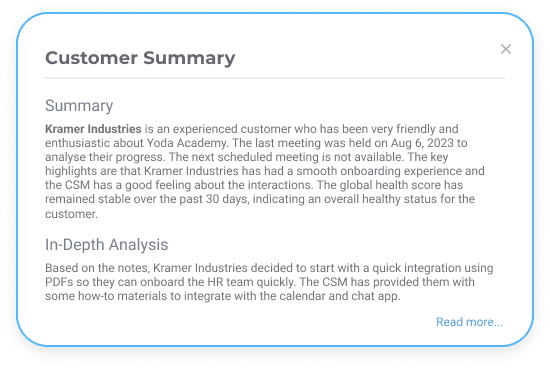
10. Remember AI Enables, Humans Decide
AI, while immensely powerful when it comes to reaching your retention goal and helping you work more efficiently, can’t be relied on entirely. In the current Gen AI stage, AI is limited in its accuracy and scope. That may change very soon, but what won’t change is the need for a human touch, particularly when dealing with customers.
To circumvent potential issues of prioritizing AI over human thought, you should:
- Be aware of AI areas. Generative AI can handle most of the following categories reliably:
- Analytics
- Guidance
- Recitation
- Filling in the gaps
- Be aware of human areas. Real people outshine AI when they put their minds to it, particularly when it comes to:
- Strategy
- Cognition
- Decision-making
- Imagination
- Execution
- Work with artificial intelligence – don’t let it replace the areas where you contribute the most, but also don’t ignore its potential.
- Use a human voice and be unique. Customers will know when you’re not being authentic, and many can now recognize AI text (those em dashes are a dead giveaway).
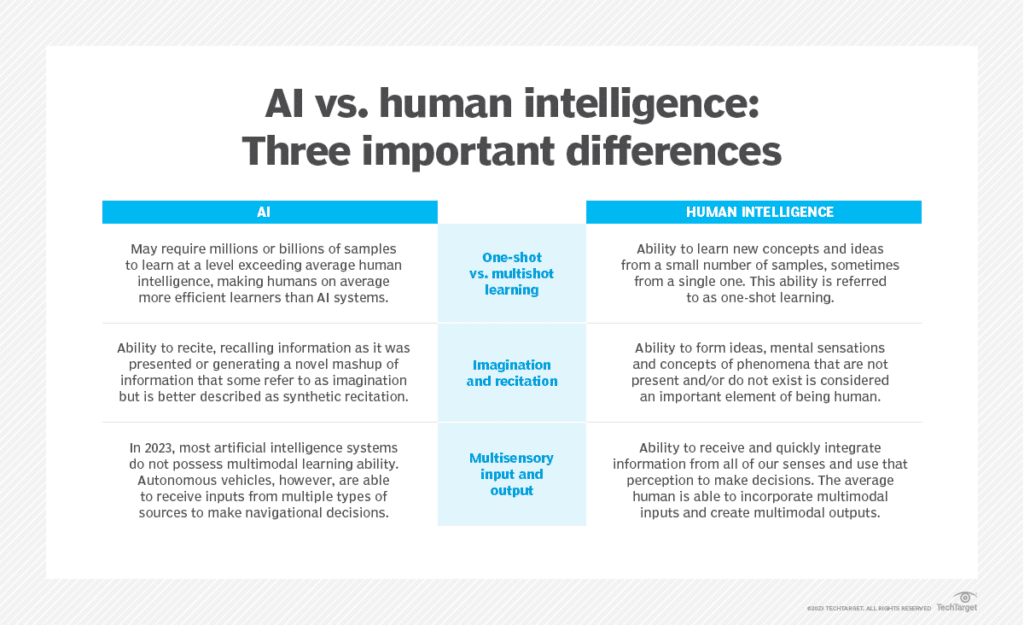
11. Plan for Future Customer Journeys
Lastly, one innovative way to use AI to drive your business forward is to look at the broader picture, see how customer journeys evolve and change. LLMs can be a great ally when it comes to predicting customer wants and needs, customer experience trends, and how your specific business area will evolve.
Remember:
- Generational shifts happen, use AI to stay ahead of them. Whenever your preferred LLM’s knowledge cutoff is updated (aka when the training data becomes more recent), you should ask it about emerging trends within your industry and see if there are opportunities for improvement.
- Keep up to date with the evolution of decision-making behavior and demographics. You should also periodically ask your preferred AI whether there’ve been significant changes to C-suite demographics and how they make decisions. As generations change and younger people get promoted, you’ll start to see changes in your clients’ purchasing behavior as well.
- AI will make things more accessible but also more complex. There’s a false idea circulating around the business space that conversational AI has made business decisions simpler. In fact, the opposite is true – since decision-makers increasingly use AI for research, they’re diving deeper into specifics, reviewing features, comparing you to your competitors, and so on. It’s easier than ever, particularly in B2B SaaS, to see what your options are, but it’s also a lot more complex to actually settle on a specific solution.
Keeping all of these things in mind will ensure you’re prepared for when the needle moves and you need to adapt your retention strategy. If you want to be future-proof, set up quarterly workshops on AI trends – invite all relevant stakeholders (such as the Product and Customer Success teams) and review current market data and AI capabilities.
Mistakes to Avoid when Using AI for Customer Retention
1. Over-Automating or Spamming with AI
The rule of thumb when using AI in the future is “don’t be cringe” – customers are increasingly able to see when your content is inauthentic, and we see this more and more with marketing and chatbots:
In the quest to be seen as fun, relatable or in touch with the moment, some brands go too far. They chase TikTok trends that have nothing to do with their business. They use slang that doesn’t fit their voice. They turn solemn moments into sales events.
– Scott Baradell, Chasing Every Trend Is Ruining Your Brand, Entrepreneur
Imagine complaining about your food being delivered late and the AI agent replies with jokes or if you have a plumbing problem in your house and the bot says “Let that sink in lol”. You’re likely to get annoyed, take screenshots, put it on Twitter and tag all the humans who were responsible.
– Gautham Srinivas, AI chatbots and their “Cringe” problem, UX Collective
The solution is simple – show restraint, pass everything through a human filter, and focus on value rather than jumping on a trend. Using AI for retention can be very powerful, as evidenced by the tactics presented earlier in this article. But do it too much and you risk causing churn instead of stopping it.
2. Thinking AI Just Means Adding Chatbots
While we’re on the topic of chatbots, another mistake often seen with the advent of AI is companies thinking a chatbot is enough.
AI chatbots can be good if trained appropriately. However, more often than not, their adoption means using cookie-cutter LLMs that only serve to dissuade customers from ever bringing their issues to your attention.
Instead, you need to think about AI adoption at the organizational level, where it can actually add value to your team and customers. And if that includes adding a chatbot to handle support requests and shore up retention, make sure you do it right.
3. Replacing Humans with AI
In recent famous examples of companies shooting themselves in the foot when it comes to AI, let’s look at Duolingo.
A while ago, they added AI features to their product, something I also suggest in this article. However, while initial reviews were mixed-to-good, the company then proceeded to kick things into high gear by “bragging about replacing human workers with AI.” That’s when things took a turn for the worse (to be read – “disastrous”).
Consumers and creative professionals […] are voicing their discontent at the ways some companies are using more AI, especially when it replaces jobs typically handled by humans. In thousands of comments and posts about Audible and Duolingo that The Post reviewed across social media — including on Reddit, YouTube, Threads and TikTok — people threatened to cancel subscriptions, voiced concern for human translators and narrators, and said AI creates inferior experiences.
– Heather Kelly, ‘It destroys the purpose of humanity’: Customers are saying no to AI, The Washington Post
This reaction quickly prompted CEO Luis von Ahn to walk back his earlier comments about replacing humans with AI. But the damage was already done, and one of the best social media brand strategies ever was dead in the water.
Tech companies have embraced AI tech at all costs, driven by massive hype surrounding the tech — and consumers are quickly growing wary and frustrated. The race to replace human workers with tech hasn’t sat well with many […]. Consumers have bristled at companies stuffing AI into virtually every aspect of their digital lives.
– Victor Tangermann, Duolingo CEO Expresses Astonishment That People Were Mad When He Bragged About Replacing Workers With AI, Futurism
This example proves that it’s not AI adoption that can cause customer retention problems, it’s how you do it. Duolingo’s initial AI adoption was largely well-received. The backlash began with their CEO’s later statements that didn’t match the brand voice, nor their audience’s values.
4. Letting AI Make Decisions
Lastly, I want to reiterate a point I’ve alluded to throughout the article – that you shouldn’t let AI make decisions for you. Here’s a short review of why that’s a bad idea:
- AI does not have the capacity for empathy. The practical approach isn’t always the right one – one thing that humans have is their capacity for empathy, which should always factor into any decision, whether on a business level or on a customer retention level.
- The purpose of AI LLM prevents full objectivity. It may be a trap to let your AI engine make a decision for you, as it will always make the decision that satisfies you, the user making the query, based on your previous interactions with it. Most generative AIs’ capacity for objectivity is fundamentally limited by their desire to serve the user.
It’s perfectly fine to use AI or any other tool at your disposal to facilitate better outcomes. But don’t lean on AI as a be-all and end-all to decision-making. It can be one tool in your arsenal, but do not let it be the only or even primary tool.
– Steven L. Blue, 3 Reasons Not to Rely on AI for Decision-Making, BuiltIn
Will AI Revolutionize Customer Retention?
It very well could.
Customer retention efforts have long been undermined by the complexity of the customer base. Some customers might prefer one approach over another, and the larger your customer base gets, the more ways different customers want to be serviced.
AI can help solve, or at least simplify, this issue.
Key Takeaways
- With generative AI efficiencies, CSMs will be able to increasingly offer personalized support at scale.
- CSMs will also be able to use AI to keep CSAT and retention rates high.
- However, you need to strike a balance between AI tactics and human input. Companies need to remain authentic to their brand image and audience, and prevent customers from losing trust in their approach to AI.
Feel like brainstorming more ideas?
Schedule a demo with the Custify team, and we can chat about your goals when it comes to integrating artificial intelligence into your CS strategy.



